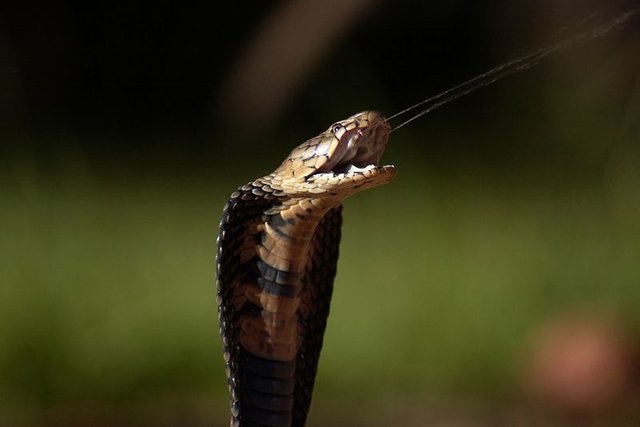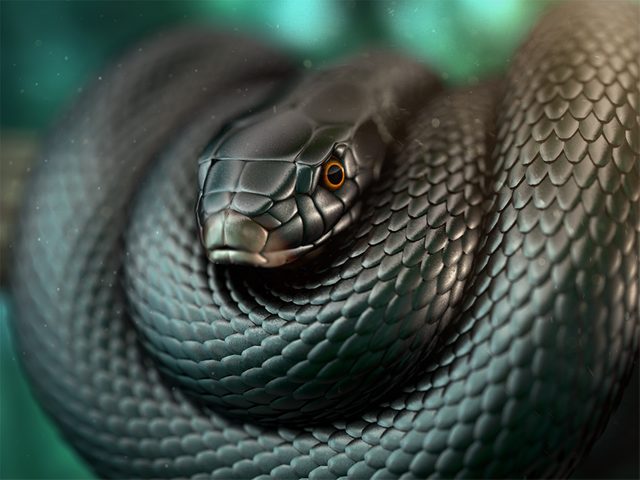The World's Deadliest Snakes And Understand How Different Venom's Work.
This article will cover three different snake venom types, Cytotoxic, neurotoxic and hemotoxic. I have also added a category for other” which will describe venom types not covered by the three main types. Please note that many venomous snakes have a combination of venoms not just a single type. Example of this is the Papuan Taipan which has neurotoxic, myotoxins and hemotoxins in its venom, so you will experience the combined effects of all these different types of venom in a single bite.
Cytotoxins:

Major cytotoxic snakes include:
PUFF ADDERS, GABOON ADDERS, MOZAMBIQUE SPITTING COBRA, WESTERN BARRED SPITTING COBRA (Namibia), WOOD’S BLACK SPITTING COBRA.
Spitting Cobras have a Cytotoxic and to a lesser extent Neurotoxic venom.
Rinkhals in some areas have a strong cytotoxic effect as well.
Minor cytotoxic snakes include:
Stiletto snake (also known as the burrowing asp), Horned Adder and Many-horned Adder, Night Adder and Snouted Night Adder, Desert Mountain Adder and Plain Mountain Adder.
Snake venom consists mainly of proteins. It is these proteins which cause the toxic effects on the body. Cytotoxic venom works on a molecular level by destroying the cell membrane thus destroying the tissue cell by cell. The macro effect of this cell destruction and the effect we can see with the naked eye is tissue necrosis. The swelling seen on cytotoxic bites is the bodys immune system flushing the area with lymphatic fluid in order to dilute the effects of the venom and to remove the destroyed cells. Cytotoxic venom will cause extreme pain as your bodies pain response is activated to tell you that you are experiencing a massive injury, our pain response is our nervous systems way of alerting us to bodily damage so we stop and do something about it and pain is relative to the degree of injury suffered, which shows you what a serious injury a cytotoxic envenomation is. The pain from a cytotoxic bite is almost immediate and swelling and tissue necrosis will begin at the bite site and progress from there as the venom spreads through the body. Imagine getting bitten on the finger by a Puff Adder ( most bites occur on the limbs) you would experience pain from the moment you get bitten alerting you to the fact you are injured, the venom would begin destroying tissue cell by cell resulting in tissue necrosis even bone is slowly eaten away by the venom. You would then get massive swelling as your body desperately tries to slow down the effects of the venom proteins now causing havoc in your body, toxins in the venom will increase your heart rate in order to allow for greater disbursement of venom into your system. The muscle tissue which the cytotoxins are slowly eating away get into your blood stream and end up being filtered through your kidneys and liver, however the pieces of muscle tissue are too big to be properly processed by your kidneys and end up clogging them. Death will not come from the necrosis on your limb but from organ failure, or you will lose a limb and have partially functioning kidneys for the rest of your life. The previous is the worst case scenario were antivenom was needed but not given. Even bites from snakes considered much less venomous such as White Lipped Vipers and Copperheads can result in fewer fingers and reduced kidney function.
Hemotoxic:
.jpg)
Major haemotoxic snakes include:
BOOMSLANG, BIRD or TWIG SNAKE,North American Pit Vipers, Saw Scaled Vipers, African Bush Vipers, White Lipped Vipers.
Hemotoxic venoms can work in two ways they can affect the clotting factors in the blood or they will destroy the red blood cells. Imagine being bitten by a Boomslang there would be very little pain at the bite site and symptoms would be delayed for several hours. Inside your body the venom is busy destroying the lining of your red blood cells causing uncontrolled internal bleeding, the first outward signs of this would be bleeding from the bite site and bleeding from your mucus membranes in your mouth and eyes, death would occur from internal bleeding. This type of venom shows little external problems, its your insides that liquefy from massive internal bleeding. North American Pit Vipers have strong hemotoxins in their venom and patients have to go repeatedly for blood tests weeks after the bite to make sure their blood is clotting properly even after anti venom has been administered. There are also hemotoxins which cause the blood to clot. Some Australian Elapids have procoagulants in their venom which causes the blood to clot, you will eventually die of a heart attack as the blood cannot pump through the veins and your heart has to beat ever harder in order to try to circulate blood through your body causing your heart to overwork itself and heart attack follows. Many snakes that have cytotoxic venom also have hemotoxic effects, examples being the North American Pit Vipers, Saw Scaled Vipers, African Bush Vipers, White Lipped Vipers. The bruising seen in snake bites is caused by hemotoxins and dead blood cells can be mistaken for tissue necrosis this has been known to occur with treatment of the South American Lance Heads (Bothrops species). Hemotoxins can also result in kidney problems as the body has to filter large amounts of dead blood cells clogging the kidneys and resulting in reduced kidney function. In some of the bites from these snakes such as Western Diamond Back Rattlesnakes and Copperheads, blood blisters will develop near the bite site, this is caused by bleeding through the tissue just under the surface of the skin.
Neurotoxins:

Major neurotoxic snakes include:
BLACK MAMBA, GREEN MAMBA, CAPE COBRA, FOREST COBRA, SNOUTED COBRA (formerly known as Egyptian Cobra), RINKHALS, SEA SNAKES.
Rinkhals have a Cytotoxic as well as a Neurotoxic venom.
Minor neurotoxic snakes include:
Coral Snakes, Shield Nose Snakes, Garter Snakes, Berg adders (generally do not cause respiratory distress).
Neurotoxins in snake venom can be presynaptic or postsynaptic, both types can be found in a single species venom or only one can be present, these two different toxins work on two different nerve functions effecting the way nerve synapses function. Neurotoxins bind to the nerve receptors causing them to stop functioning. Neurotoxins effect the central nervous system and death will result from the nerves in your diaphragm not functioning and you will die from respiratory failure. Other signs of neurotoxic envenomation is drooping eyelids, slurred speech and excessive salvation all caused by nerves not functioning properly. There is very little pain from a neurotoxic snake bite and brain damage does not occur from the venom as the venom molecules are too big to pass through the blood brain barrier, although brain damage will occur from oxygen deprivation should you stop breathing for too long. Permanent nerve damage does not occur in most species such as Mambas and Cobras as the venom does not damage the nerve cell, however with bites from the Asian Kraits permanent or semi-permanent nerve damage can occur as the toxins adhere to the nerve cells for much longer. An interesting side effect from a neurotoxic snake from Australia the Collet’s Snake is the permanent loss of taste or smell after the bite has been successful treated. Bites from Berg Adders can also result in problems with smell and taste, however these effects are not permanent.